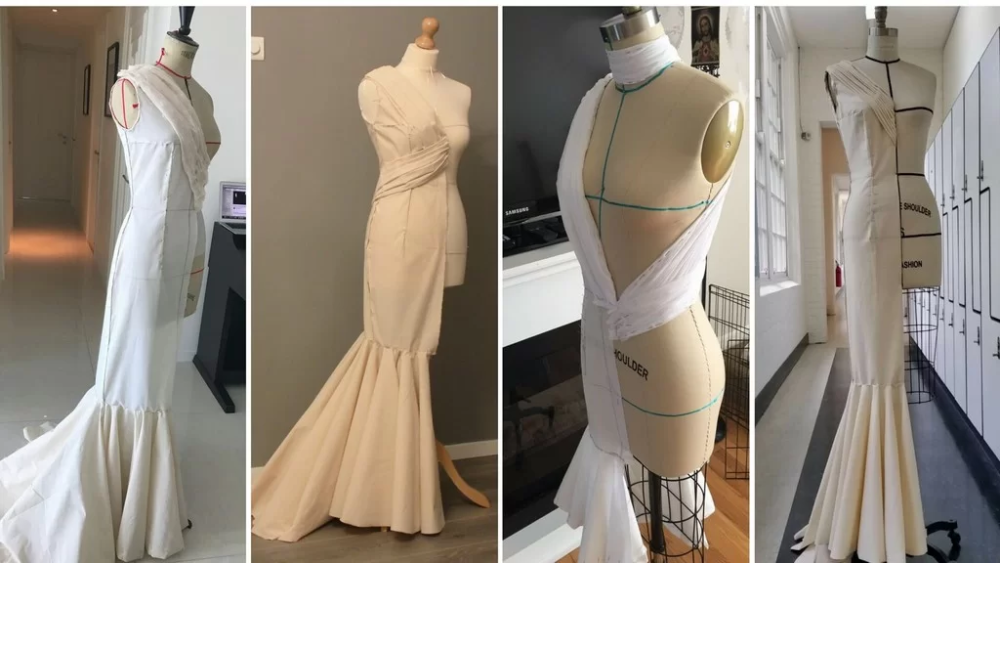Introduction
Fashion draping is a foundational technique in garment design, allowing designers to sculpt fabric directly on a dress form to create three-dimensional silhouettes. This hands-on approach fosters creativity and offers a tactile understanding of how fabrics behave, enabling the creation of unique and well-fitted garments.
- Understanding Draping
Draping involves positioning and pinning fabric on a dress form to develop the structure of a garment. Unlike flat pattern-making, which relies on two-dimensional patterns, draping offers a more intuitive method, especially beneficial when working with complex designs or unfamiliar fabrics.
- Essential Tools and Materials
To begin draping, you’ll need:
- Dress Form: A mannequin that matches the intended size and shape of the garment.
- Muslin Fabric: A plain, woven cotton fabric ideal for test garments due to its affordability and ease of use.
- Pins and Marking Tools: For securing fabric and marking design lines.
- Measuring Tape and Scissors: Essential for accurate measurements and cutting.
- Pattern Paper: To transfer the draped design into a flat pattern for final garment construction.
- Basic Draping Techniques
- Bodice Draping
Start by draping the front and back bodice separately, ensuring proper alignment with the dress form’s center lines. Pinch and pin darts to shape the fabric around the bust and waist areas.
- Skirt Draping
Drape the skirt by aligning the fabric’s grainline with the dress form’s center front. Create pleats or gathers as desired, and ensure the hemline is even.
- Sleeve Draping
Sleeves can be draped by attaching fabric to the armhole and shaping it to fit the arm’s contour, allowing for movement and comfort.
- Advanced Draping Techniques
- Bias Draping
Draping fabric on the bias (diagonally across the grain) allows for greater stretch and fluidity, ideal for creating garments that cling to the body’s curves.
- Cowls and Cascades
These involve creating soft, draped folds in the fabric, often used in necklines or skirts for a flowing effect.
- Structural Draping
This technique focuses on creating sculptural elements, such as exaggerated shoulders or voluminous skirts, by manipulating fabric into rigid forms.
- Transferring Draped Designs to Patterns
Once satisfied with the draped design:
- Mark Seam Lines: Use a fabric marker to outline seams, darts, and other design elements.
- Remove and Flatten: Carefully unpin and lay the fabric flat.
- Trace onto Pattern Paper: Transfer the markings to create a paper pattern.
- Add Seam Allowances: Include necessary seam allowances before cutting the final fabric.
- Tips for Successful Draping
- Understand Fabric Behavior: Different fabrics drape differently; practice with various materials to gain insight.
- Maintain Grainlines: Always align fabric grainlines correctly to ensure garment stability.
- Start Simple: Begin with basic designs before attempting complex structures.
- Document Your Process: Take notes and photos to replicate or adjust designs in the future.
